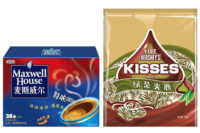Consumers buy food in packages. Converters buy ink to print onto packaging materials. Ink formulators develop inks that will perform to commercial printing standards. The science is continually evolving to keep up with business.
As the science around flexible packaging ink and material has changed, so have the expectations of consumers. Their growing demands for environmentally responsible packaging, coupled with tightening government regulations around allowable amounts of volatile organic compound (VOC) emissions, has flexible food packaging manufacturers hungering for sustainable solutions. But are those solutions ready to take the main stage in the industry?
The Challenge with Solvent-Based Inks
Solvent-based ink technology was developed using petrochemical and new manufacturing technologies that emerged after World War II. VOCs are inherently contained within the solvent-based inks and materials in differing amounts. During the drying process, VOCs convert to gases and are released, adversely impacting the print operator’s health and lowering the quality of air in the printing facility.
Despite this fact, solvent-based inks remain the most common type of materials in use today in the flexible packaging industry, making up 80-85 percent of the market. Solvent-based printing is a mature technology that performs well, allowing print jobs to move at high speeds. This makes printing processes using solvent-based ink more affordable than water-based ones.
So, what’s driving the need to change?
The Pressure is on
In an ongoing effort to reduce the buildup of ground-level ozone caused by VOCs, EPA regulations governing VOC emissions are gradually tightening. Passive consumerism is a thing of the past, and today’s customers are front and center in shaping change in the packaging market. End-use consumers value more food packaging that takes the environment into account.
Manufacturers now have the opportunity to capitalize on this consumer trend to tailor the science and ensure that it still drives business in a profitable and responsible direction.
Does the water-based alternative fit into that flow?
Weighing in on a Water-Based Solution
Water-based inks and materials offer packaging solutions with substantially lower VOC profiles. But the challenge has been to develop water-based products that perform as well as solvent-based materials in a commercial application.
Water-based technologies are working hard to meet performance standards set by their solvent-based counterparts. Although the technology has been slow to mature, water-based inks available today offer a competitive alternative to solvents.
However, getting converters to adopt the new technologies can be a different story.
Cultivating the Conversion
As all converters may not be willing to jump right in, ink formulators need to engage in progressive tactics to nurture a wider acceptance of water-based inks.
Some effective ways in bridging the water-based gap between formulators and converters include:
Using mock-ups: Create packaging mock-up samples of flexible packages to give buyers an example of water-based technology on flexible films that they can actually hold in their hands. They can examine the quality and durability for themselves.
Get out there: Trade shows, technical conferences, magazine publications and other industry events allow ink formulators to make solid connections with converters and brand owners and to collect information they would likely not otherwise have.
Build strong relationships: Relationship building between the R&D team and customers gives ink formulators insight into new types of technologies and equipment being used in their print processes.
The Ink Bottle is Half Full
Evolving to keep pace with demands of converters, governments and the end consumer can be a relentless pressure. However, the silver lining to this packaging cloud is that manufacturers now have an opportunity to use the demands as a data barometer for shaping the future. The solution is actually presenting itself. It’s just a matter of getting there.
BASF




